WELCOME. EndTitles.

_It lies within the listeners how they want
to translate the work and in what order.
The pictures will of course develop in their mind
even without seeing the film._
NEWS.
LFL FLF: -_-
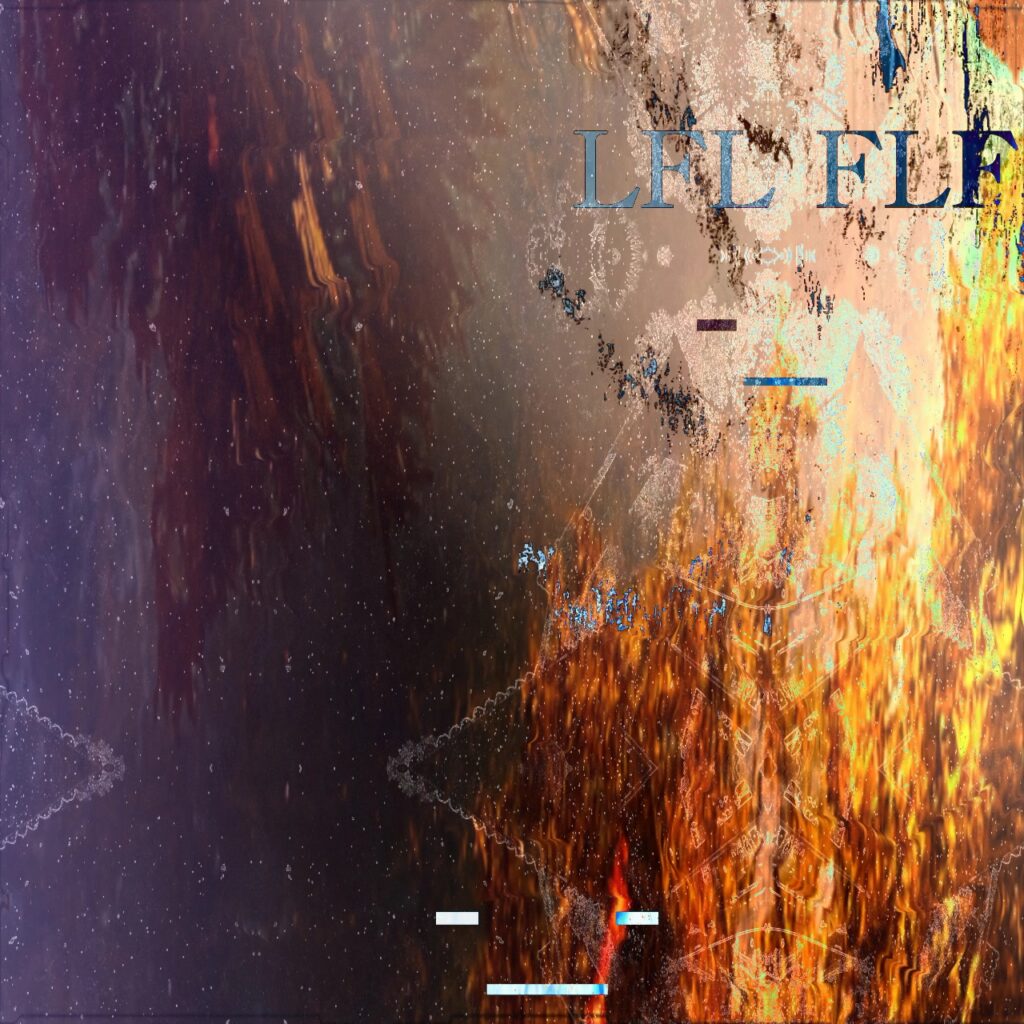
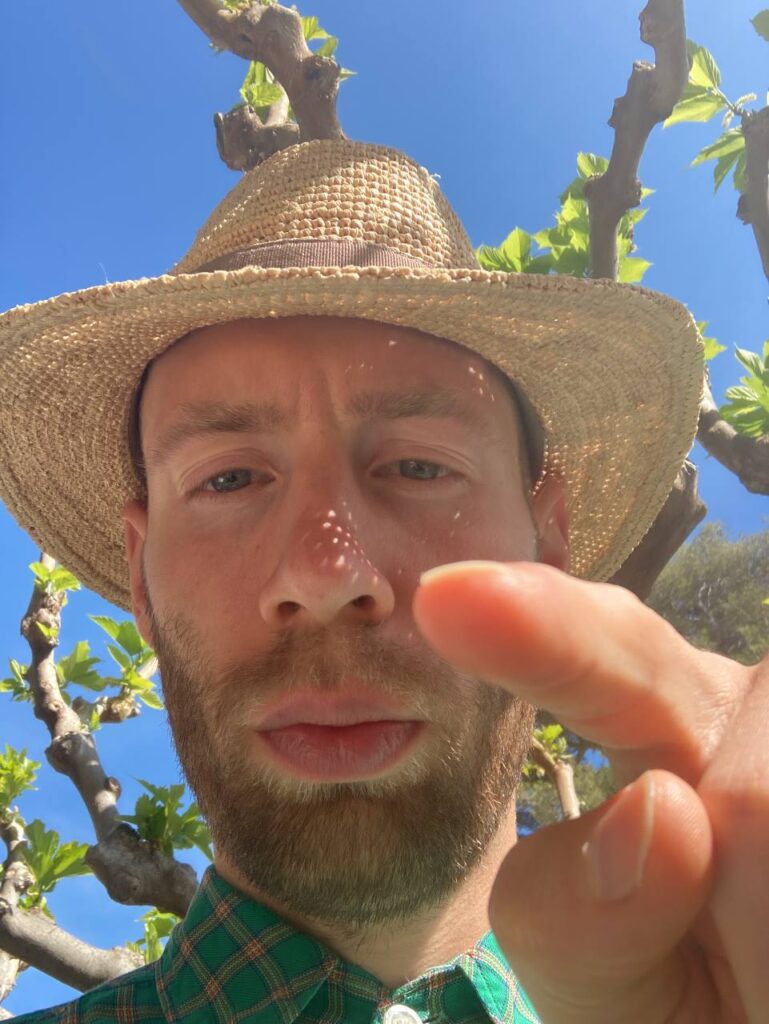
It all began with live electronic jam sessions in early 2022. At that time, I was a Sound Arts student at HKB in Bern, Switzerland. Creating music live and in collaboration with others, was a departure from my usual practices. Over the past decade, my focus had primarily been on composing and mixing electronic music, as well as working on intermedial installations that intertwined sound, light, and visuals. The jam sessions immersed me in a living intermedial sound installation and where key to the creation of my first LP, titled -_-
Welcome LFL FLF!
PS: Today, May 19th, LFL FLF turned 30. To celebrate, he designed his own album cover as a gift.
Happy Bday .-)
Meeting the artist. An Interview.
ET: What is your release «-_-» about?
L: Getting things done, even if you are not fully satisfied. Setting a mark to look back or come back. It’s not that I’m not at all happy with the result, but for my emotional self, the process is over a long time before the release. Usually, my process ends even before a track is finished. For me, it’s enough to have some loops, sketches, and my imagination. But for a proper release, you’d better finish it off. After 15 years of making music, I realized this fact and adapted my process accordingly. The result is that I finally released some music! Yay! And set a basis for my future music.
ET: What was your instrumental approach?
L: Working with instrumentalists was key to this LP. Collaborations were all that was missing in my previous attempts at making an LP. So I’m really thankful for the jams with Julie B. (vocal), Anna Regina Kalk (guitar), and Sol-i So (vocal).
ET: What are your next steps?
L: Let it sink in and sink with it. 🙂
Honestly, I want to expand my palette. Playing drums, singing in a choir, and getting better in audio programming—learning more about acoustics and physics. This is my momentary mood, but it always changes. I’m curious about where I’ll be when I look back on this statement.
ET: What are your main music related influences?
L:
- João Gilberto
- Ornella Vanoni
- Domi & JDBeck
- Aphex Twin
- Bob Marley
ET: Best loved hardware vs. Best loved software?
L:Hmm… I’m really on the fence with hardware. Somehow, material scares me. Maybe it’s the bad feelings when they get dusty from time to time and the sad look in their eyes. If I have to choose, I would say my Rhodes Mk2 because it’s the only hardware left and truly a beauty! But I don’t know if it will survive my material scaredom. I like having all possibilities, and I love programming my effects and instruments in MaxMsp. For me, that’s the way to realize my visions in music.
ET: Thank you, LFL FLF. Cheers!
LATEST RELEASE.
Joel Gilardini: L’Anno Della Valanga
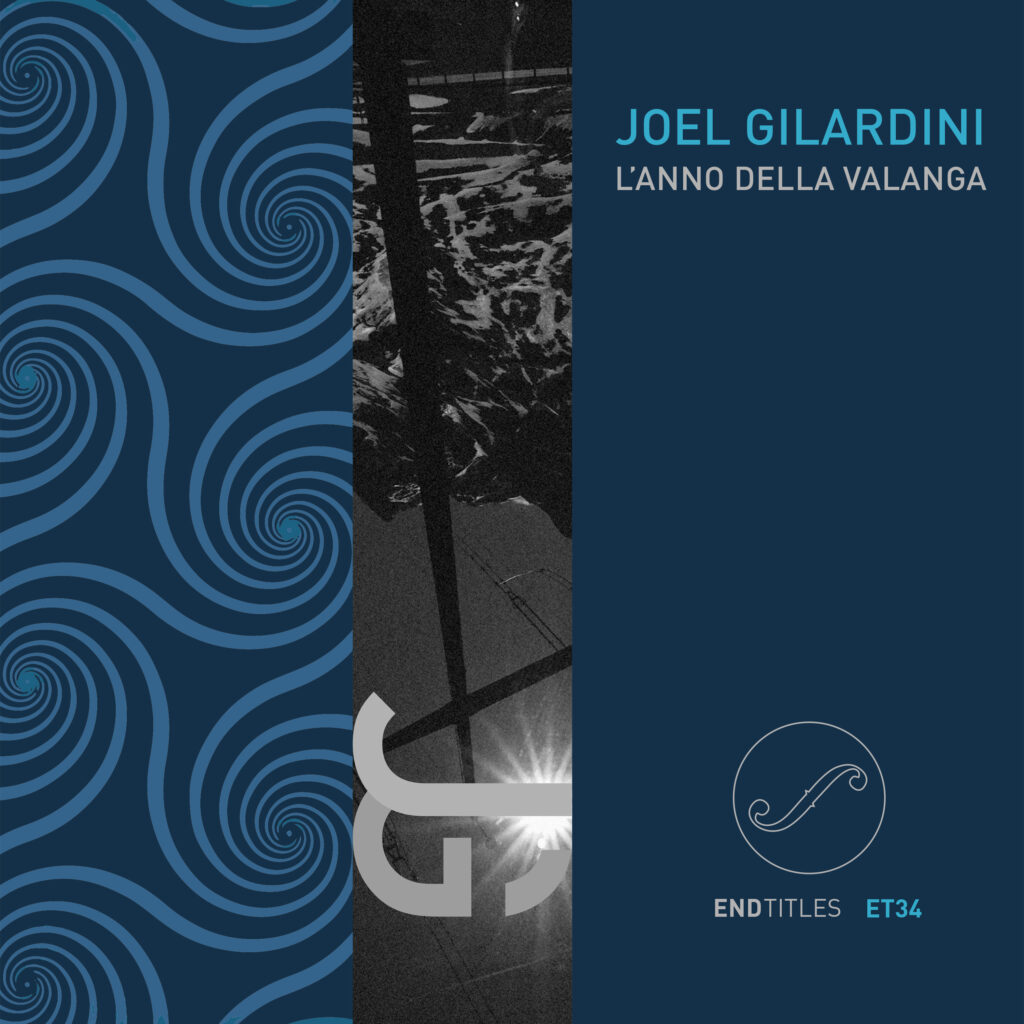
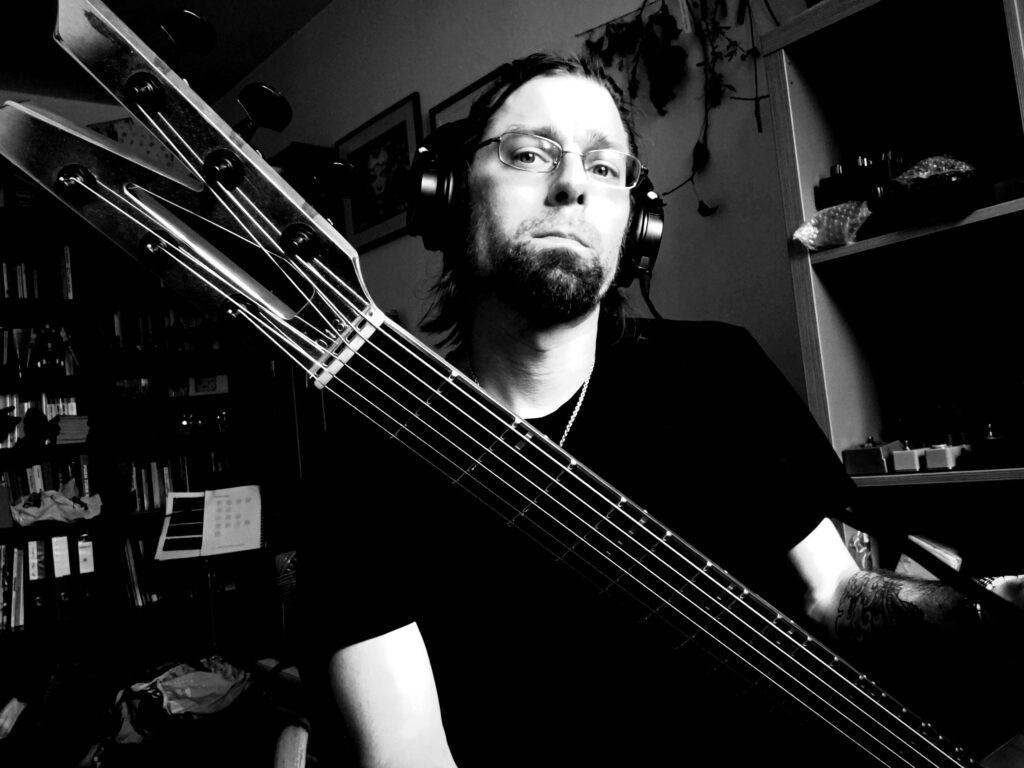
Guess who’s back? I am pleased to announce and welcome for the fourth time Joel Gilardini!
We all eagerly awaited Joel’s new release on EndTitles. There it is: L’Anno Della Valanga. «Very often over all my works, snow and mountains are a constant presence, like a fil rouge keeping all tight together. This album takes freely inspiration from these topics, my home land Ticino and the book “L’Anno della Valanga” (“The Year of the Avalance”) by Giacomo Orelli.»
Joel Gilardini is an experimental guitarist and sound designer, based in Zurich (Switzerland). Involved in various projects, he is well known for his live-ambient-guitar sets as an opening act for Nik Bärtsch’s Ronin (ECM) in Zurich’s clubs, as well as being the mastermind behind the experimental-doom-metal act The Land Of The Snow and part of the noise-industrial duo Mulo Muto (together with Attila Folklor, from grind-punkers Insomnia Isterica).
Welcome back, Joel.
SEPL: Inertia
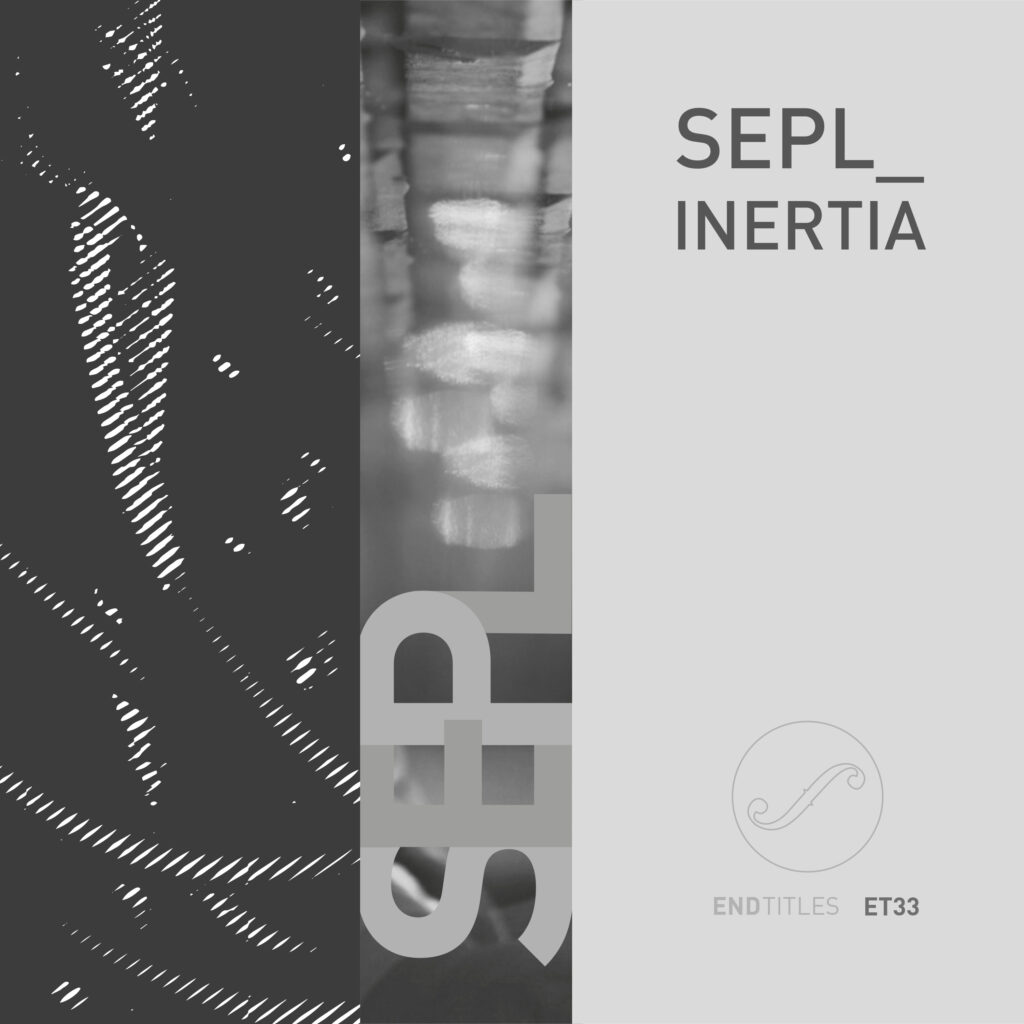

Thierry Arnal (musician/visual artist) is a french based composer (Lyon, France) active since 2006 and principally working with field recordings, sound collage and computers since 2018 as SEPL.
Audio works by Thierry (and under AMANTRA, HAST, TH-A & SEPL aliases) have been published on labels including: Justin Broadrick’s label Avalanche Recordings, Denovali, Kvitnu, Thisco Records, Peacock Window Recordings, Pharmafabrick, Mahorka, Annihilvs Power Electronix… As well as numerous compilation appearances and remixes.
«Musically speaking, no landmarks, just a soundscape in which you can’t hold on to anything. I rather like the idea of leaving the listener the choice to imagine what he wants while listening to a piece or an album, nothing is imposed. A really physical approach and absolutely not intellectualized.»
Welcome to EndTitles, Thierry.
Reviews:
SEPL: Inertia by EndTitles
EndTitles, 2023
This one is deep dish no nonsense experimental music. It starts off abstract and stays abstract but I wouldn’t say there’s nothing to cling to. The sound evokes some sort of function in an industrial sense and I almost hate using that word since it comes with musical baggage. I’m thinking more along the lines of asteroid mining. Maybe it’s the scratching inside the mind of an insane gold miner grinding out into the goldless landscape like a bored hysteric during a bookless winter. Or frozen methane rain. This music will not be there for you if you don’t listen to it. I said stop crying. Meditative unmindfulness.
– Warmth Highest, April 2023
Meeting the artist. An Interview.
ET: What is your release «Inertia» about?
S: There’s no «goals» or «about» regarding «Inertia» because i do not intellectualize what i do, it’s mostly physical. Maybe the only thing i’m looking for is the listeners‘ inability to define what they are listening to. As a listener myself, i don’t need explanations on what i’m listening to, i’m not looking for that with music. Sometimes words are killing music, it’s just noise take it or leave it.
I like the Phill Niblock quote: «No harmony. No melody. No rhythm. No bullshit.»
ET: What was your instrumental approach for «Inertia»?
S: My instrumental approach is always the same with SEPL. It’s mainly improvisations and collages reshaped with EQs. That’s what it’s all about noises & sounds recordings and its heavy process. It’s a lot of work but i like it this way and it fits perfectly with my working routine. I can record hours of impros/field recordings for finally use 20/30 minutes (4 hours initial recordings for «Inertia»).
ET: Tell us about your work as a visual artist?
S: Whether it is for SEPL or image making in general, my practice/approach is similar, and the link is inseparable. I’m always working on images, mostly low quality photos that are digitally textured and manipulated. I have tons of unused pictures. The impact that an image can have on my sound production is undeniable. The influence works both ways. I often need an image as a trigger.
ET: What are your main music related influences?
S: Definitely GODFLESH & LOW for me the best bands ever and major influences. But the main influence in what i do with SEPL is and had always been the «ERASERHEAD» soundtrack. «ERASERHEAD» had a huge impact on me when I first listen to it in the mid 80′. But I can be influenced by the sound of human activities too, each sound is kind of an influence.
ET: Best loved hardware vs. Best loved software?
S: Best loved hardware vs. software? I’m not an analog orthodox guy and to be honest I don’t care about analog tools. I used to own keys and hardware stuff, but not anymore. There’s a lot of great cheap or free software editors/tools available and I feel comfortable in the digital world.
ET: Thank you, Thierry. Cheers!
Didier Guigue: Quatre Fois

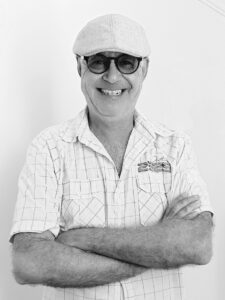
A French-born, Didier Guigue lives in João Pessoa, Brazil. As a Senior Researcher at CNPq (National Council For Reseacrh) and Tenured Teacher at the Universidade Federal da Paraíba, his academic production, lectionning and lecturing activities are mainly in the fieds of XXth/XXIth Century Music Theory, History & Aesthetics, and Computing Applied to Music. Docteur en Musicologie du XXe Siècle by the E.H.E.S.S., Paris (France) under the directon of philosopher and composer Hugues Dufourt, he is since 1997 the founder and director of the Mus3 Research Group, a IRCAM associated partner, and member of other research groups or laboratories in Brazil and France.
His concern as a composer ranges from experimental to techno music, sometimes with a slight touch of afro-brazilian references. A member of Artesanato Furioso, a group of experimental artists focused on live performance & improvisation, uses to interact with other expressions, including dance, video and digital visual arts.
Read more about the Artist…
Joan Jordi Oliver: Transit
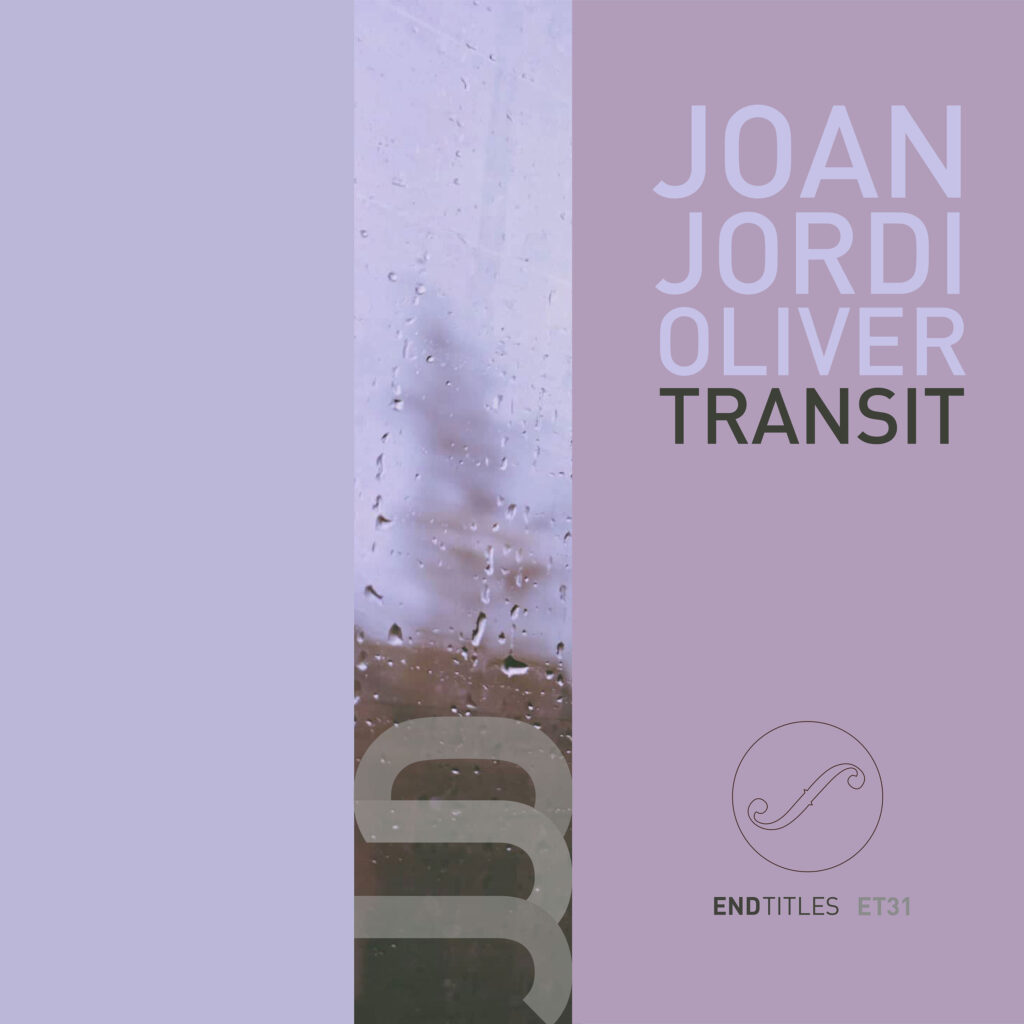
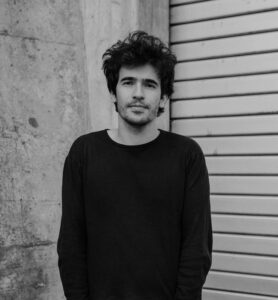
Joan Jordi Oliver (born 1994) is a musician from Spain based in Zürich, Switzerland. As a saxophonist, composer, improviser, and producer of electronic music, his multifaceted artistic practice is based on constant exploration of new forms for musical expression that attempt to transcend aesthetic barriers and deny categorization.
His work as a saxophonist and performer-composer pushes to expand the possibilities of his instrument and focuses on the hybridization of the acoustic saxophone with the endless possibilities of transformation afforded by the electronic medium, a process in which the voice of the instrument is completely transfigured. As a producer, he has immersed himself in sonic research that explores a different notion of sound as space, reflecting on concepts borrowed from drone and ambient music aesthetics. His latest creative efforts in this direction have culminated in his first two albums of experimental ambient music, Enlaire (2021) and soon Transit (2022).
Read more about the Artist…
Meeting the artist. An Interview.
ET: What is your release «Transit» about?
JJO: I began the writing process of Transit in the autumn of 2021. Since the beginning, it was a conscious attempt to reflect my emotional state at a time of fast, deep changes. I found myself moving into a new country, coinciding with the end of my musical studies, pressured to integrate myself in a new culture and set the foundation for the development of my musical career. Excitement and hope were often mixed with uncertainty and fear, and I had to re-evaluate a set of conceptions that were deeply assimilated. Everything was moving at an accelerated pace, and I became obsessed with the impossibility of permanence – the things we leave behind, the things we lose. That resulted, partly, in a search for relief that took the form of photography and field recordings – attempts to capture, to immortalize moments, attempts to give them a tangible form. Most of those field recordings ended up being an essential part of the sound world of Transit, like a sort of collection of emotionally charged moments now frozen in sound.
The end of a relationship and having to temporarily relocate to my small hometown in Spain made the emotional foundation for Transit even more relevant. The writing process was a way to remain connected with myself, in an activity where I found excitement, authenticity and peace. It was at the same time a way to legitimize, and capture, the intensity of the emotions at that time.
Creating the music for the album was a journey in itself. With a few exceptions, I composed the tracks in the order they appear in the album. This narrative, the sense of progression and the evolution of the musical material from one track to the next was intentional from a compositional perspective, but it also served as a documentation of my own personal process during those months. Those pieces became a sort of self-portrait evolving in time. Next to carefully crafted musical structures, I indulged myself with some more visceral gestures, specially in the introduction of field recordings. Many voice samples can be heard through the different tracks: they are messages from friends and loved ones from conversations we were having at the time of the composition. In the suffocating Deeper inside we found the mess we made, the heavy distorted sound of broadcasts on the Russian-Ukranian conflict screams through the track. The addition of this material, charged with personal meaning, to patiently produced musical content, felt like a comfortable and exciting approach to create this music.
I made Transit with the hope that the music would deliver a strong sense of narrative. The use of these personal sonic materials, the pictures embedded in the field recording and the words of friends abstracted in sound certainly set a personal context around the album. At the same time, I do not attempt to fully reveal their meaning to the listener, not pinning down every single source or describing what each process and track should truly describe. I’m deeply intrigued by this situation, where sounds that are deeply near to me may become abstract to others. I do wonder what kind of narratives the listener imagines while listening to the music, if there are any at all. But I do hope that Transit encourages imagination and invites its listener to their own sonic and personal journey.
ET: What was your instrumental approach for «Transit»?
JJO: When I begin composing, the choice of instrumentation is essential to the concept of the piece and suggests certain working strategies and compositional processes. I usually tend to follow a rather reductionist approach, sticking to a few sources and tools and exploiting their possibilities. I think this perspective responds to my background as a saxophonist – for many years, I developed a strong connection with a single instrument as my sole tool for musical expression. The electronic medium has expanded my sonic palette, but these deep relationships with certain instruments or tools have remained as the most comfortable routine for imagining music. Many of my works rely on electronic processing of my saxophones. The sound world of my first album, Enlaire, explored the digital transformation of a single synthesizer.
In the case of Transit, however, I tried to be more generous and inclusive and explored multiple sound sources. I already described the integration of many field recording and speech samples, which added analogue depth and noisy material to the whole texture. The purely musical material was created using several analogue and digital synthesizers and an electric guitar. The original sources, however, are not interesting or relevant for the sound I’m aiming towards: as in previous works, I rely on heavy digital transformations of these instruments to create something detached from their original sonic identities. In this sense, I’m not a gear fetishist and do not care much about one source or another – sculpting, breaking, transforming sounds through digital means is what I’m truly interested in. In that respect, I consider my DAW my real and ultimate instrument. I transform sound and create textures primarily using Max, and I structure those sounds and develop the composition in Reaper. I have a multitude of plugins and a few guitar pedals that I use to further transform sound, but I consciously try not to reveal their identity in a very transparent way in the music.
My practice as a composer has been quite divided in between two approaches. On one hand, I conceive pieces designed for the stage, meant to be performative and quite gestural. The use of live electronics is my preferred method when working in this direction – I perform motives live and loop them, and I transform sounds in real time using custom Max patches. On the other hand, I produce tracks, relying on a slower process that favors care for smaller details and more complex structures. I still improvise and record gestures that become the sonic material of the piece, but sculpting, transforming, erasing and re-organizing becomes this slow, peaceful practice that allows me to create my pieces and gain independence from the gestural necessity of live performance. Transit, in this sense, was never meant to be a performative piece or a work that would be effective on stage: the album format is its final form and the individual, private listening situation on headphones its final goal.
ET: What are your main music related influences?
JJO: I discovered experimental electronic music and ambient works quite late in my career. I was very much this profile of a nerdy classical musician that knows extensively about the classical canon and academic literature but cannot name more than three songs from the Rolling Stones. I was, however, and still am, truly engaged with contemporary classical music, and explored very extreme approaches related to free improvisation and experimental music during my training. For several years, I played saxophone in a group dedicated to the music of Alvin Lucier, and toured the world next to this legend performing his new compositions. I didn’t know the magnitude of those names when I first met them, but I have performed and recorded alongside Oren Ambarchi and Stephen O’Malley from Sunn O))). I think this project with the music of Alvin Lucier was the origin of my fascination with drone music and its long, meditative but also powerful sustained tones.
It was during the first lockdown in 2020, when my performative activity stopped, when I began diving deep in ambient music. The YouTube algorithm introduced me to Ryuichi Sakamoto, whose music left an instant and profound impression. I researched further from the figure of Sakamoto, and discovered artists like Fennesz or Sarah Davachi and labels like Touch, Mego, or Past Inside the Present. I consumed lots of music during those slow months, and felt deeply connected to the aesthetic of some of these artists. But if there was an artist that changed it all for me, that was Tim Hecker. His extensive work, with incredible emotional depth and complexity, obsessed me for months and years. I try to keep up to date with artists and labels, and try to listen to new music as much as I can. But the impressions that figures like Sakamoto and Hecker left in me still resonate loudly and feed my artistic desires. After that first lockdown and these meaningful musical discoveries, I felt encouraged to produce work in this direction and slowly began my own journey into ambient music.
ET: Best loved hardware vs. Best loved software?
JJO: As I mentioned before, I enjoy the digital medium as a means to sculpt and transform sounds. Creating new colors and sculpting textures in different shapes is the core of my compositional process. For these transformations, I use a multitude of plugins and granular strategies in environments like Max and Reaper. For me, the combination of these two is indispensable when creating music.
I do not own much hardware gear. I count on a few synthesizers that I now know quite well, like the Behringer Model D, which was my very first synthesizer and which I still use in almost all of my works, both for stage and for production. There is however a piece of analogue gear that is incredibly rich in its sonic possibilities and that I’m lucky to have mastered – the saxophone! I purposely avoided using it in my two first albums in order to force myself to explore different tools, but I’m keen to integrate it again in my current works. I find the combination of saxophone and synthesizer sounds deeply fascinating, and my next project explores this combination extensively.
ET: Thank you, Joan. Cheers!
Stefan Schmidt: Subkreskaĵaro
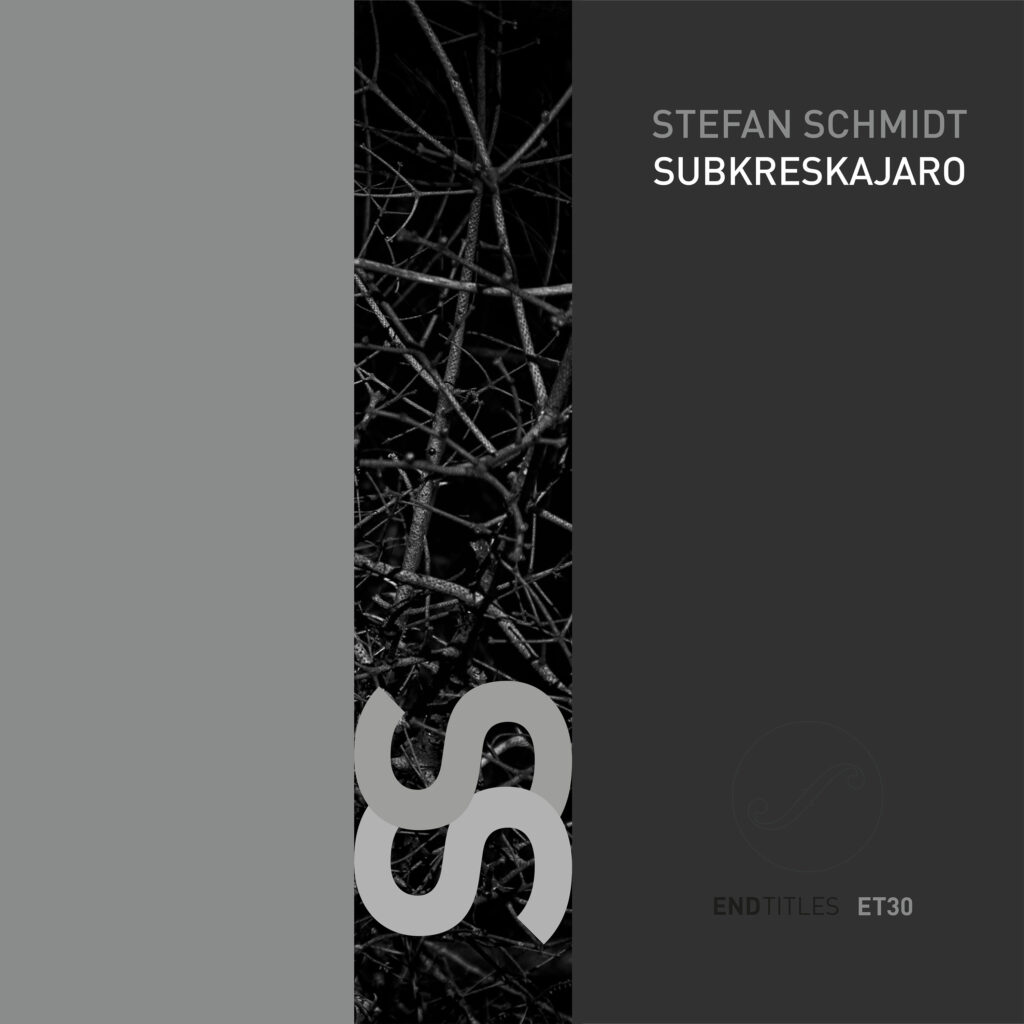
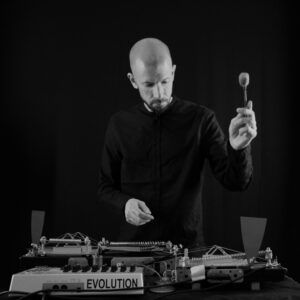
stefan schmidt (born 1974) is a guitarist, composer, improviser and teacher. he gathered his first musical experiences as a member of various punk bands and later studied classical guitar at the hochschule für musik trossingen with professor andreas higi and at the conservatorio juan josé castro in buenos aires with victor villadangos.
«subkreskaĵaro» is an improvisation for 6-string fretless bass and effects. It documents the first steps with his new instrument and continues what has become something of a tradition: making albums that use a single instrument or sound source. This is his first release at EndTitles.
Read more about the Artist…
Meeting the artist. An Interview.
ET: What is your release «Subkreskaĵaro» about?
SS: «Subkreskaĵaro» continues the tradition of making albums that use only a single instrument – this time it happened to be a 6-string fretless bass. I like the idea of restricting myself to one source of sound and mangling it in various ways. Quite often I challenge myself by choosing an instrument I’m not really capable of playing (e.g. piano, recorder or blues harp) which contributes to the experimental character of these releases.
ET: What was your instrumental approach for «Subkreskaĵaro»?
SS: Honestly – just playing around. The album is a documentation of my first steps on the instrument which I gave myself as a christmas present. It was badly adjusted at that time – e..g. the string action was too low – and I also had to get used to the big scale of the fingerboard. I tried various combinations of analog and digital effects and just started recording.
ET: Tell us more about your work as a classical guitar teacher?
SS: I work as a teacher for classical guitar at two music schools in Baden-Baden and Karlsruhe. Most of my students are children between 6 and 18 years. Some of them are very open minded, dedicated and curious so it can be a quite rewarding work. I don’t want to sound to negative so I’ll keep it short: Others are not.
ET: What are your main music related influences?
SS: There are too many to name them all and they are constantly changing. The most important ones that have accompanied me over the years are – though not always audible in my own music – renaissance vocal and baroque lute music, middle eastern and asian music but also more obvious genres like free improvisation, noise, electroacoustic and contemporary music.
ET: Best loved hardware vs. Best loved software?
SS: For many years I only used software or acoustic instruments in combination with computerbased effects to create my music. Only last year I developed a small addiction to hardware synths, noise boxes and effect pedals. It’s just more tactile than to work with the mouse or programming midi controllers and as the focus of my music has been shifting from composition to improvisation during the years, hardware fits better to my workflow and I also like the restrictions that often come with it. I try to combine the best of the two worlds, because sometimes there are things you can not achieve with hardware – and it’s also cheaper as there are a lot of great freeware VSTs.
ET: Btw, what does «Subkreskaĵaro» mean?
SS: The name of the album and all the track titles are in Esperanto. (Subkreskaĵaro means ‚brushwood‘.) After reading the book «Die Bienen und das Unsichtbare» by C.J. Setz about constructed languages and their history I became fascinated with the idea behind it. If I only had the time I would learn it, just for fun. But I don’t think that will happen.
ET: Thank you, Stefan. Cheers!
Daniel Barbiero: …for double bass & prerecorded electronics
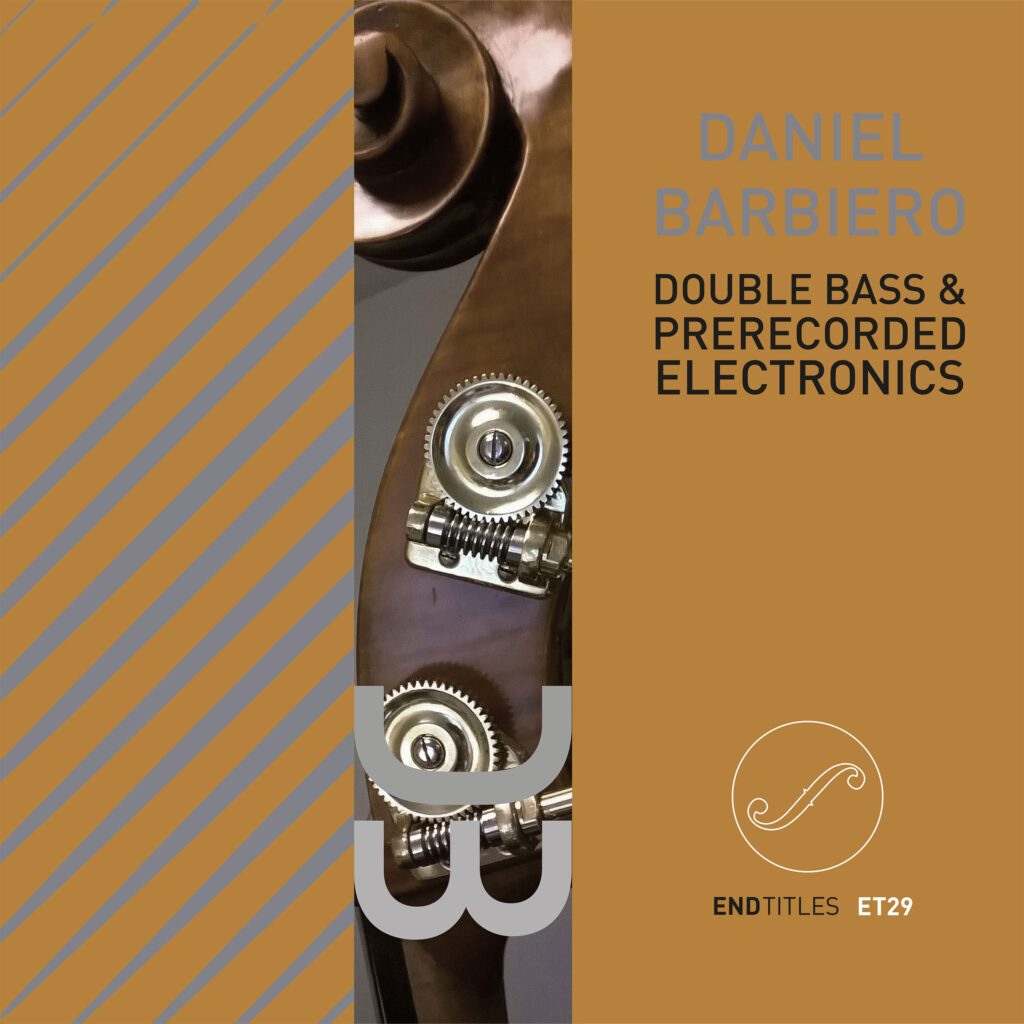
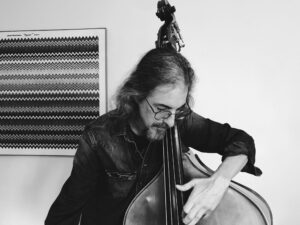
…for double bass & prerecorded electronics is the second release by double bassist-composer Daniel Barbiero for Endtitles. It follows and in some respects is a companion piece to 2020’s In/Completion, an acclaimed collection of graphic and other open-form scores by contemporary composers, realized for solo double bass.
«…for double bass & prerecorded electronics was inspired by the classic tape-and-orchestral-instrument compositions of the 1960s and 1970s. Electronic tracks were composed and realized by Ken Moore on the Moog Sub Phatty analog synthesizer; I subsequently composed or improvised parts for double bass or prepared double bass in response to Ken’s tracks. The electronic tracks that formed the basis for 4a, 4b, 4c and 6 originally appeared on Ken’s Electronic Mutations album, while the remainder were composed and recorded in February, 2021 for this project. My double bass and prepared double bass parts were recorded in February, 2021…»
Read more about the Artist…
Reviews:
Daniel Barbiero – …for double bass & prerecorded electronics
EndTitles, 2022
Daniel Barbiero plays contrabass compositions and improvisations with fixed-media tracks of analog synthesizer realized by Ken Moore on the eight-track, 39’ …for double bass & prerecorded electronics.
The synthesizer sounds unfashionable, with an aura of seventies sci-fi spacestation bridge tracks, looped or played like loops through shifting parameters and textures or affecting aleatoricism through dramatic shifts in space and jumps in timbre. Stark contrast to the warmth and depth of acoustic contrabass. Which complements and presents counterpoint to the electronics through various methods. Rumbling vibrato for hashy crackle. Winding arcs bowed for buzzing bee paths. Staccato for stippling beeps. Something like the theme of Psycho for sirens. Hoarse nervous sawing and cascading pizzicato for electric sputtering. Matching texture, movement, relative register, speed, space to make this couple less odd. In a way it replicates the response required from acoustic musicians to early electronics and in doing so revisits the fundamentals of adaptive communication. Demonstrated vividly through three iterations of response to one electronic track, moving from melody bowed over it, to mixing in arco rhythmic repetitions eddying like electronics loops, to a plucked scalular lyricism with rhythmic eddies that synchronize with the bubbling electric beat.
– Keith Prosk
Harmonic Series 1/16, May 2022
Meeting the artist. An Interview.
ET: What is your new album «…for double bass & prerecorded electronics» about?
DB: The new album is really just about trying to create something in a genre I’ve always liked–the orchestral-instrument-and-tape music of the postwar period. I like the idea of taking an essentially 17th or 18th century instrument and letting it stand against a new technology, and then hearing the basic timbral contrasts that result–the synthetic sounds of the electronic backdrop against the acoustic instrument’s more organic sounds. I’ve done a number of collaborations with electronics before, usually live, where my sound is fed into a computer and manipulated in real time, or in the studio, where my sound is processed after the fact. This time I wanted to work with a fixed backdrop, to interpret it and adapt to it on its own terms, in a sense. In this regard I was especially inspired by Luc Ferrari’s Etudes d’improvisation, which uses a set of prerecorded electronic tracks to provide certain constraints for the performers who improvise with them—constraints of tonality, rhythm, texture, and what-have-you.
ET: What was your instrumental approach for the album?
DB: It was actually pretty simple—just electronics on the one hand, and acoustic double bass on the other. The idea was to take a set of prerecorded electronic tracks and then (mostly) improvise to them. But of course now that meant somehow coming up with the electronic tracks! I didn’t want to do them myself, partly because I’m just not that conversant with working with electronics, and partly because I wanted the electronics to provide the stimulation of someone else’s musical sensibility. My friend Ken Moore, with whom I’ve collaborated on double bass and synthesizer duets, had an album of electronic music that I liked. A few of the pieces on it had the kind of sound I was looking for, so with his permission I took them and improvised appropriate responses. It was all done in my home studio, with the tracks playing through headphones while I recorded with my usual mic setup. Because I didn’t have enough for an album—and it was beginning to dawn on me that maybe I should go ahead and do an album—I asked Ken to put together several more tracks. Choosing which tracks to improvise to involved having to make decisions about what kind of feel I wanted the piece to have, how dense a background I could comfortably work with, whether or not I wanted it to have a regular rhythm—that kind of thing. The electronic parts were done with the Moog Sub Phatty analogue synth; the double bass is purely acoustic. On one or two pieces I prepared the bass.
ET: What are you going to do next?
DB: That’s a good question–I really don’t know! I don’t have any albums planned at the moment, but I’m working on a new graphic score in the Modular series and have been providing some advice to a composer revising a graphic piece for solo double bass. I also recently finished interpreting another graphic score written for me by a different composer. And, I’ll have the pleasure of having a track on an upcoming Endtitles release of different versions of composer Didier Gigue’s Quartre fois. Well, that’s a real miscellany, isn’t it!
ET: Best loved hardware vs. Best loved software?
DB: Best loved hardware is the acoustic double bass. It demands a lot from those of us who play it, but when it’s feeling cooperative there’s no better collaborator. The second question I’m going to have to answer metaphorically, I’m afraid. The best loved software is the idea or the affect animating the sound—whether it’s an interesting concept for a composition or technique, or just that strange, complex web of judgment, feeling, sense, and possibility that comes into play whenever we pick up the instrument and make music with it. It’s the irreducibly human factor in music. Not exactly a ghost in the machine, since it sometimes seems to follow an unpredictable, impish logic of its own, but maybe more like a poltergeist. A mostly benign poltergeist.
ET: Thank you, Daniel. Cheers!
Werken: Sfaira
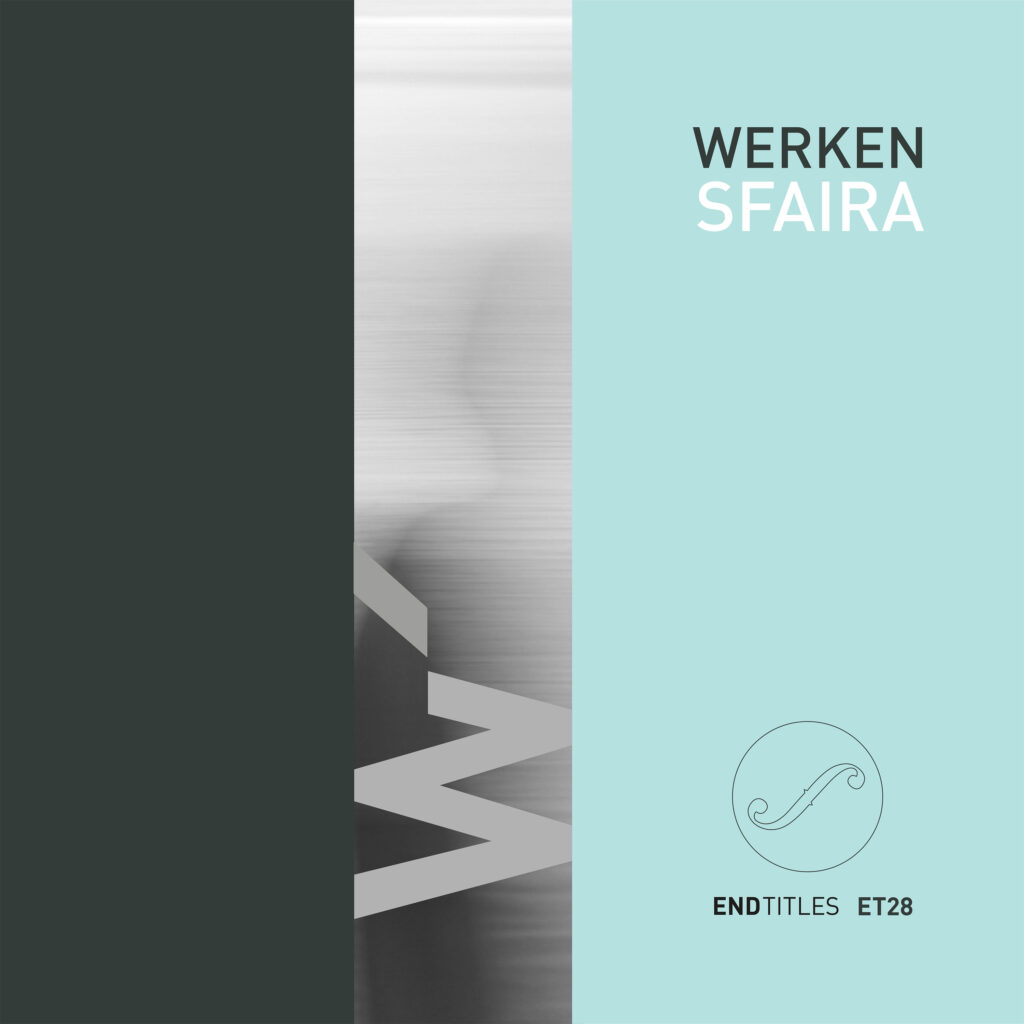
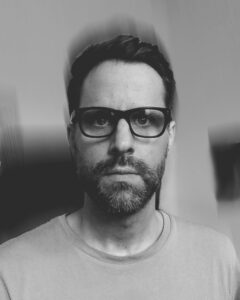
Working as a producer, composer, saxophone/reed player and sound designer, Berlin-based TILMAN EHRHORN (aka Werken) appears on many jazz records as well as presenting himself as an electronic artists. Within the last few years he has released several critically acclaimed solo albums on Mille Plateaux and Resopal Schallware. He contributed tracks to several compilations and carried out some remix tasks. In addition to influences from contemporary electronic music, modern jazz is an important source of inspiration for his compositions, creating similarities with the improvisational niveau of jazz and contemporary composed music. Besides his artistic activity he works as head of study programme Audiodesign and professor of music design and music theory at SRH Berlin School of Popular Arts (formerly hdpk).
«In the end this production process resulted in two different releases, of which the more experimental album is now called SFAIRA. Enjoy listening!»
Produced by Tilman Ehrhorn (aka Werken) and An Moku
Read more about the Artist…
Meeting the artist. An Interview.
ET: What is your release «SFAIRA» about?
TE: The album was created in a production process together with another album. At the current production time, I was on the one hand very interested in creating tracks that follow more of an typical ‚dark ambient‘ direction, including and involving melodies and harmonies in the form of dynamic soundscapes and a somehow almost epic or cinematic structure in their dramatic progression. But at the same time, I became more and more fascinated with experimental sound design. I wanted to compose sounds and pieces that are more influenced by musique concrète, acousmatic or electroacoustic music that sometimes follow different rules in their compositional structure. Here the sounds, their design and processing are a very essential part of the actual composition. In the end this production process resulted in two different releases, of which the more experimental album is now called «SFAIRA».
ET: What was your instrumental approach for «SFAIRA»?
TE: I programmed most of the instruments myself as software devices. I use the graphic programming environment ‚Max‘ and its implementation ‚Max for Live‘ together with the DAW Ableton Live. In addition some of my synthesizers that represent more classical forms of synthesis (FM, physical modeling, granular synthesis), there are also several signal-processing tools that can freeze sounds and thus capture and further process what are actually fleeting snapshots. The use of various reverbs is also part of my instrumental approach. Virtual constructions and designs of rooms could also serve as instruments for me here, so to speak. Furthermore, field recordings play a certain role; these come into play especially in the tracks in the collaboration with An Moku.
ET: Tell us more about your work as lecturer at the university in Berlin?
TE: I have been a lecturer at the SRH Berlin School of Popular Arts for almost 10 years now. After starting there as a freelance lecturer, I am now a full-time professor and work as a the programme director for a study programme called ‚Audio Design‘. I am very fortunate that after a working as a jazz saxophonist for many years, I was able to turn my passion into a career for a second time. I teach both „classical“ music subjects like music theory and ear training but also give classes in sound design, synthesis and composition. On the one hand, this involves the realization of students‘ individual projects, but also the creation of commissioned works.
ET: What are your main music related influences?
TE: The influences are indeed very diverse. As I mentioned, I worked as a jazz musician for a long time, and during this time I was of course extensively involved with this music. When I took my first steps with electronic music in the early 2000s, I was mainly influenced by artists who produced in the ‚clicks and cuts‘ aesthetic that was very popular at the time. Many releases of the label Mille Plateaux, on which I was also able to release my debut album, inspired me a lot at that time. Frank Bretschneider, Andreas Tilliander and above all Jan Jelinek should be mentioned here. I’m also a real fan of more ‚ambient‘-related artists like Tim Hecker and William Basinski. But I’ve also had periods where psychedelic rock music or obscure releases from the 60s and 70s have influenced me a lot. I also like to listen to classical music from the 20th century. I admire composers like Dmitri Shostakovich, Paul Hindemith but also György Ligeti very much. If I had to name direct influences to the album «SFAIRA», I would definitely name Bernard Parmegiani – in my opinion one of the most important composers of electroacoustic music. However, I am also very interested in the works of contemporary electronic music composers such as Kassel Jaeger, Marja Ahti or Lionel Marchetti.
ET: Best loved hardware vs. Best loved software?
TE: In fact, I have been using almost no hardware to create sounds and produce for several years now. I program most of the instruments and effects myself. Occasionally I am tempted to buy some new software which appears attractive to me, whose concept I then rather try to build myself according to my personal wishes. I now also work with generative systems that can support composition processes, so the design of the tools plays an increasingly important role in the actual composition.
ET: Thank you, WERKEN. Cheers!
